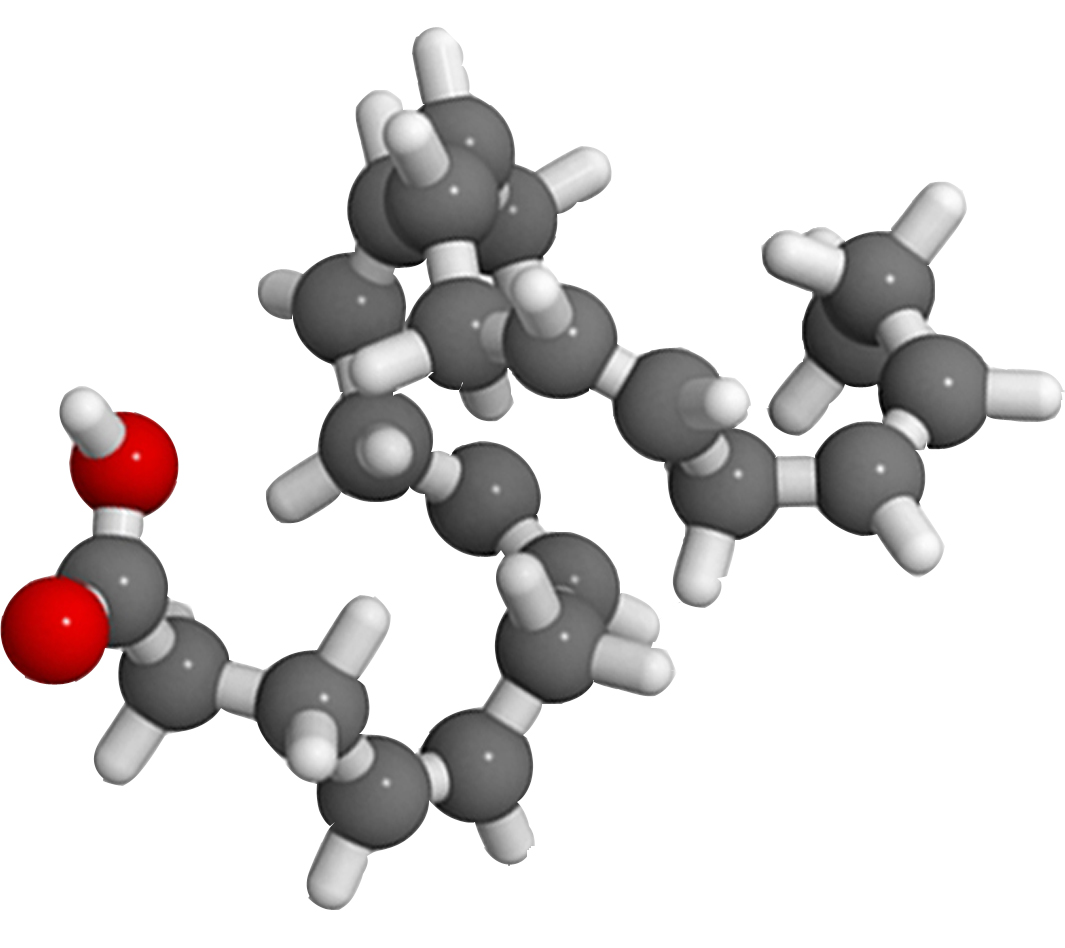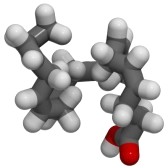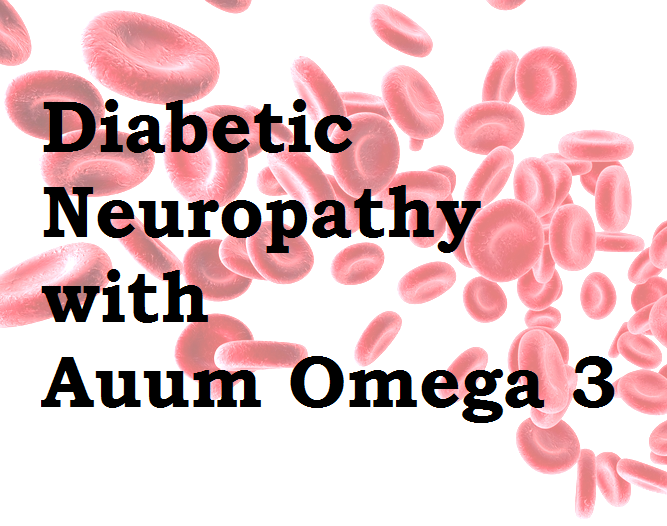 Study Link Resources for Holistic Practitioners
Study Link Resources for Holistic Practitioners
Effects of Omega 3 Essential Fatty Acids are remarkable
The effects of Omega 3 Essential Fatty Acids are incredibly remarkably for the ‘overall’ human health, more so when the Omega 3s and Omega 6s are balanced 1 to 1 like that of Auum Omegas.
Study Link Resources for Holistic Practitioners is a collection of studies for your research and not limited to the amount of research available links provided:
-
- Mental Health – A Clinical Study on the Benefits of Mammalian Omega-3 On Children with Learning/Behaviour Problems Study Results
- Sports Performance – 21 days of mammalian omega-3 fatty acid supplementation improves aspects of neuromuscular function and performance in male athletes compared to olive oil placebo
- Lower Prevalence of Impaired Glucose and Diabetes associated with Daily Seal Oil or Salmon Consumption Among Alaskan Natives
- Involvement of liptogenous pathways in docosapentaenoic acid introduced inhabitants of platelet aggression
- Docosapentaenoic acid (22-5n-3 DPA) an elongation metabolite of Eicosapentaenoic acid (20-5n-3) is a potent stimulator of Endothelial cell migration on pretreatment in Vitro
- Effect of Marine Oil Supplementation on Coagulation and Cellular Activation in Whole Blood
- Effects of Dietary Marine Oils and Olive Oil on Fatty Acid Composition, Platelet Membrane Fluidity, Platelet Responses, and Serum Lipids in Healthy Humans
- Diabetes – British Nutrition Foundation
- Dietary intake of Alaska Native people in two regions and implications for health: The Alaska Native Dietary and Subsistence Food Assessment Project
- Effects of Omega-3-Rich Harp Seal Oil on the Production of Pro-Inflammatory Cytokines in Mouse Peritoneal Macrophages
- Diets Enriched in Fish-Oil or Seal-Oil have Distinct Effects on Lipid Levels and Peroxidation in BioF1B Hamsters
- Effects of seal oil and tuna-fish oil on platelet parameters and plasma lipid levels in healthy subjects
- The Use of Omega-3 Supplementation for Managing Diabetic Peripheral Neuropathy (DPN)
- Chemotherapy-Induced Peripheral Neuropathy (CIPN)
1. Mental Health
A Clinical Study on the Benefits of Mammalian Omega-3 On Children with Learning/Behaviour Problems
Clinical study ran over 3 years with 42 children who had learning disabilities/behavioural problems. The benefits of Auum Omega 3 Sublingual-D were evaluated.
ABSTRACT – As a Registered Nurse (R.N.) Suzanne Charbonneau has a rounded view of health care, having spent most of her career with seniors & newborns. Sue’s understanding of life from birth to death was naturally shaken upon her discovery of the existence of a mammalian form of Omega-3. –”The very idea that this concept has not been emphasized from day 1 in all patient care and nutrition systems has undoubtedly cost patients years off of their lives. As a frontline investigator/ and a supervisor in clinical trials evaluating the Benefits of Omega-3 on Children with Learning/Behavior Problems, I was astounded at the speed and depth of the results – progressively during the study, the children began speaking, expressing themselves, making friends, learning new things, reading and doing math, some at advanced levels.
While the clinical results in themselves showed dramatic improvements in numerous areas, including improved imagination, decreased aggression, improved sleep patterns, improved attention span and improved interpersonal skills, sociability, making friends, holding conversations, improved verbal and communication skills, these percentages cannot communicate the powerful emotional experience of witnessing the dramatic changes in each one of these children.”
For more facts from the Clinical Study, please review Study Results.
Key words: ADD, ADHD, autism, AUUM Omega 3, AUUM seal oil, DHA, DPA, EPA, learning disabilities, Omega 3
Go to top of page.
 2. Sports Performance
2. Sports Performance
21 days of mammalian omega-3 fatty acid supplementation improves aspects of neuromuscular function and performance in male athletes compared to olive oil placebo
AUUM’s principal goal is to help create happier, healthier and better performing individuals. Athletes can win or lose based on the efficiency of their nerves. The ability of skeletal muscles to generate force and resist fatigue is essential to sport performance. All muscle contractions result from nerve signals and therefore superior nerve-muscle interaction translates to increased performance. Researchers at the University of Toronto conducted a study on well-trained athletes, and demonstrated that AUUM’s Sublingual-D formulation both increased muscle activation (by 9%) and reduced fatigue (by 5%).
Evan J. H. Lewis, Peter W. Radonic, Thomas M. S. Wolever and Greg D. Wells (Journal of the International Society of Sports Nutrition JISSN research link) and (US National Library of Medicine PubMed research link)
Printable pdf version.
Athletes win and lose based on the efficiency of their nerves! All muscle contractions result from nerve signals and therefore superior nerve-muscle interaction determines performance. Researchers at the University of Toronto showed that AUUM Sublingual-D increased muscle activation 9% and reduced fatigue by 5% in well-trained athletes.
Our data indicates N-3 PUFA supplementation improved peripheral neuromuscular function and aspects of fatigue with an unclear effect on central neuromuscular function. Clinical trial registration NCT0201433.
Excerpt: “…we did observe a 9 % increase in VL EMG activation in the N-3 PUFA group compared to baseline and a very likely beneficial 22.0 ± 20.0 increase in muscle activation. These data suggest N-3 PUFA supplementation supported peripheral (neuromuscular junction to contractile apparatus) but not central (brain to neuromuscular junction) neuromuscular adaptations.”
Additional research included: Wanasundara U, Shahidi F. Positional distribution of fatty acids in triacylglycerols of seal blubber oil. J Food Lipids. 1997; 4(1):51-64. Publisher Full Text
Excerpt from PubMed (printable pdf version): Pages 4/5
Omega-3 supplementations For 21-days, participants consumed 5 mL of seal oil N-3 PUFA (5000 mg N-3 PUFA, 375 mg EPA, 230 mg DPA, 510 mg DHA and with 1000 IU vitamin D3) (Auum Inc., Timmons, On) or 5 mL olive oil (Bertolli, Mississauga, Lewis et al. Journal of the International Society of Sports Nutrition (2015) 12:28 Page 4 of 11 Canada) with 1000 IU vitamin D added. Participants were instructed to take 2–2.5 mL servings orally twice daily, and to let the oil remain in the mouth for 1-min before swallowing to allow for sublingual absorption
[14]. Seal oil was chosen as the source of experimental N-3 supplement for this study because mammalian (seal) triacylglycerol molecules have N-3 PUFA fats primarily in the sn-1 and sn-3 positions, as opposed to the sn-2 position of fish oil N-3 PUFA [15, 16]. Fats in the sn-3 position are preferentially cleaved by sublingual lipases, and the sn-1 fat is cleaved in the small intestine, while the sn-2 fatty acid is left for later esterification [14, 17]. These structural differences are thought to enable chylomicrons and chylomicron remnants containing mammalian N-3 PUFA to have a higher rate of clearance from the blood compared to fish oil intake [18]. [Reference links provided in printable pdf version.]
Short Term Omega-3 Supplementation on Performance, study dates and other information, U.S. National Institutes of Health ClinicalTrials.gov Clinical trial registration NCT02014233.
Journal Reference
- Evan J.H. Lewis, Peter W. Radonic, Thomas M. S. Wolever, Greg D. Wells. 21 days of mammalian omega-3 fatty acid supplementation improves aspects of neuromuscular function and performance in male athletes compared to olive oil placebo. Journal of the International Society of Sports Nutrition, 2015; 12 (28) DOI: 10.1186/s12970-015-0089-4
Key words: EPA, DHA, DPA, muscle activation, PUFA, Omega 3, Evan Lewis, Peter Radonic, Thomas Wolever, Greg Wells, Mammalian Omega 3 Research, AUUM omega 3
Go to top of page.
 3. Lower Prevalence of Impaired Glucose and Diabetes associated with Daily Seal Oil or Salmon Consumption Among Alaskan Natives
3. Lower Prevalence of Impaired Glucose and Diabetes associated with Daily Seal Oil or Salmon Consumption Among Alaskan Natives
Adler AI1, Boyko EJ, Schraer CD, Murphy NJ. (PubMed research link)
A study to examine the association of salmon and seal oil consumption with impaired Glucose Tolerance (IGT) and non-insulin-dependent diabetes mellitons (NIDDM) among Alaskan natives was tabulated in “Diabetes Care.” December 1994, the study concluded the consumption of Seal Oil and Salmon high in Omega-3 fatty acids appeared to lower the risk of glucose intolerance and is a potentially modifiable risk factor for NIDDM in Alaskan natives.
A look at the eating habits and blood tests of six hundred and sixty six people over the age of forty revealed that those who ate salmon everyday had a fifty percent chance of having any glucose intolerance (which includes Diabetes and Pre-Diabetes) than people who ate that fish less often. The risk dipped even lower (down to an 80% reduction in risk) for daily consumption of Seal Oil.
Key words: diabetes, glucose intolerance, omega 3 fatty acids, pre-diabetes, seal oil
Go to top of page.
 4. Involvement of liptogenous pathways in docosapentaenoic acid introduced inhabitants of platelet aggression
4. Involvement of liptogenous pathways in docosapentaenoic acid introduced inhabitants of platelet aggression
Yamashina – ku, Kuoto 607 – 8414, Japan
Department of Pathological Biochemistry Kyoto Pharmaceuticals University Missasagi
The effects of docosapentaenoic acid (DPA) on platelet aggression and arachidonic acid metabolism
The results of this study suggest that DPA possesses potent activity for interfering with the cyclooxygenase pathways thus inhibiting platelet aggression most effectively. Epidemiological studies have revealed that low incidence of myocardial infarction in the Greenland Inuits who live mainly on seals.
Seal oil contains a significant amount of Docosapentaenoic acid (22-5n-3 DPA), Eicosapentaenoic acid (20:5n-3 EPA) and Docosahexaenoic acid (22-6n-3 DHA) compared with fish oil recently the biological and pharmacological effects of DPA and the anti-atherosclerotic and anti-thrombotic effects of Seal Oil supplements were reported.
Go to top of page.
5. Docosapentaenoic acid (22-5n-3 DPA) an elongation metabolite of Eicosapentaenoic acid (20-5n-3) is a potent stimulator of Endothelial cell migration on pretreatment in Vitro
Toshie Kanayasu – Toyoda, Ikou Morita, Sel-itsu Murota (PubMed research link)
Department of Psychological Chemistry Graduate School
Tokyo Medical and Dental University
Yushima, Bunkyo-ku, Tokyo 113 Japan
Many factors such as hypercholesterolaemia, hypertension and oxidation modifies low-density lipoprotein induce endothelial cells (EC) injury which results in various pathological disorders including atherosclerosis and thrombosis. EC migration and proliferation are important processes in the control of wound healing responses of blood vessels. EC migration and proliferation also place a central role in the healing following traumatic injury due to balloon catheterization, graft placement or organ transplantation. We discovered by lipid analysis that a large amount of DPA the elongated product of EPA existed in EC phospholipids. Other studies have also reported an increase in the DPA content of phospholipids bovine (cows) and human umbilical veins. EC followed EPA pretreatment. In general, EPA and DHA and major components of fish oil, both substances are often used to investigate the effects of fish oil.
We have demonstrated that the simulative effect of EPA of EC migration may be due to DPA. Moreover, the potency of DPA stimulation of EC migration is ten fold greater than that of EPA.
Go to top of page.
6. Effect of Marine Oil Supplementation on Coagulation and Cellular Activation in Whole Blood
Osterud B, Elvevoll E, Barstad H, Brox J, Halvorsen H, Lia K, Olsen JO, Olsen RL, Sissener C, Rekdal O, et al. (PubMed research link)
A study was performed to explore the effects of supplemental intake of various marine oils to be part of the Eskimo diet. Oils such as: oil from the blubber of seal, cod liver, seal/cod liver, blubber of Minke whale. Supplementation of regular diet with a combination of seal oil and CLO and especially with whale oil seems to have beneficial effects on several products thought to be associated with cardiovascular and thrombotic diseases.
Go to top of page.
7. Effects of Dietary Marine Oils and Olive Oil on Fatty Acid Composition, Platelet Membrane Fluidity, Platelet Responses, and Serum Lipids in Healthy Humans
Vognild E, Elvevoll EO, Brox J, Olsen RL, Barstad H, Aursand M, Osterud B. (PubMed research link)
The influence of various dietary marine oils and olive oil on fatty acid composition of serum and platelets and effects on platelets and serum lipids were investigated as part of an extensive study of the effects of these oils on parameters associated wit cardiovascular/thrombotic diseases. Oils such as cod liver oil (CLO); whale blubber oil (refined and unrefined); mixtures of seal blubber oil and CLO, or olive oil/CLO were consumed. In conclusion, intake of various marine oils causes changes in platelet membranes that are favourably anti thrombotic. The combination of CLO and olive oil may produce better effects than these oils given separately. The changes in platelet function are directly associated with the alterations of fatty acid composition in platelet membranes.
Go to top of page.
8. Diabetes – British Nutrition Foundation
Diabetes is a disorder characterized by high blood levels of glucose in the blood. Diabetes can damage the large blood vessels increasing the risk of stroke, heart attack, and in the limbs, can lead to gangrene. Many studies now suggest that Omega-3 is invaluable in combating circulation problems associated with diabetes by rendering the walls of the veins and arteries smoother and more elastic.
In another study published in 1994 by the British Nutrition Foundation they reported that daily consumption of seal oil (high in Omega 3) by Alaskan natives led to a 20% lowering of glucose intolerance and diabetes.
– Adler, Boyko, Schraer, Murphy, 1994 Nutrition Supplement
Go to top of page.
9. Dietary intake of Alaska Native people in two regions and implications for health: The Alaska Native Dietary and Subsistence Food Assessment Project
Jennifer S. Johnson , Elizabeth D. Nobmann , Elvin Asay , Anne P. Lanier (Research link)
Mean intakes of omega-3 fatty acids, from fish and sea mammals, are over twenty times greater than those of the general U.S. population.
Conclusions. Traditional foods continue to contribute a significant amount of nutrients to the diet in rural Alaska. Excess simple sugars may be contributing to the rise in obesity and diabetes. Low intakes of calcium, dietary fiber, fruits and vegetables may contribute to the increased incidence of cancers of the digestive system. Emphasis on the positive aspects of Native foods and increased consumption of fruits, vegetables and calcium-rich foods are warranted. (Int J Circumpolar Health 2009;68(2):109-122)
Go to top of page.
 10. Effects of Omega-3-Rich Harp Seal Oil on the Production of Pro-Inflammatory Cytokines in Mouse Peritoneal Macrophages
10. Effects of Omega-3-Rich Harp Seal Oil on the Production of Pro-Inflammatory Cytokines in Mouse Peritoneal Macrophages
Choi M, Ju J, Suh JS, Park KY, Kim KH. (PubMed research link)
Omega-3, a polyunsaturated fatty acid, is an essential fatty acid necessary for human health, and it protects against cardiovascular disease, inflammation, autoimmune diseases, and cancer. In the present study, we investigated the effects of omega-3-rich harp seal oil (HSO) on the production of nitric oxide (NO) and cytokines, such as tumor necrosis factor (TNF)-α, interleukin-(IL)-1β, IL-6, and IL-12/IL-23 (p40) in peritoneal macrophages of mice. The culture supernatants of murine macrophages exposed to lipopolysaccharide (LPS), HSO, or HSO+LPS were harvested to assay IL-1β, TNF-α, IL-6, and IL-12/IL-23 (p40) cytokines and NO. TNF-α, IL-1 β, and IL-12/IL-23 (p40) levels, except IL-6, were lower in the culture supernatants of mouse peritoneal macrophages exposed to LPS plus HSO than those of the groups exposed to LPS alone.
These observations demonstrate that omega-3-rich harp seal oil downregulates the production of the pro-inflammatory cytokines such as IL-1β, TNF-α, and IL-12/IL-23 (p40). These results suggest that HSO could be potentially used as a preventive agent or as an adjunct in anti-inflammatory therapy, if more research results were accumulated.
Go to top of page.
11. Diets Enriched in Fish-Oil or Seal-Oil have Distinct Effects on Lipid Levels and Peroxidation in BioF1B Hamsters
Dubey P, Jayasooriya AP, Cheema SK. (PubMed research link)
2011 Mar 23;4:7-17. doi: 10.4137/NMI.S6728. eCollection 2011.
Fish-oil Omega-3 polyunsaturated fatty acids (n-3 PUFAs) are mostly esterified to the sn-2 position of triglycerides, while in seal-oiltriglycerides, these are mostly esterified to the sn-1 and -3 positions. We investigated whether fish-oil and seal-oil feeding has a different effect on the regulation of lipid metabolism and oxidative stress in BioF1B hamsters.
BioF1B hamsters were fed high fat diets rich in fish-oil or seal-oil for 4 weeks, and fasted for 14 hours prior to blood and tissue collection. Plasma and hepatic lipids and lipid peroxidation levels were significantly lower in seal-oil-fed hamsters as compared to those fed fish-oil. There was a selective hindrance of clearance of lipids in fish-oil-fed hamsters as reflected by higher levels of plasma apoB48.
CONCLUSION: Differences in the fatty acid composition and positional distribution of n-3 PUFAs in triglycerides of fish-oil and seal-oil are suggested to trigger metabolic differences.
Go to top of page.
12. Effects of seal oil and tuna-fish oil on platelet parameters and plasma lipid levels in healthy subjects
Mann NJ1, O’Connell SL, Baldwin KM, Singh I, Meyer BJ. (PubMed research link)
Plasma triacylglycerol decreased (P = 0.03) and HDL-cholesterol levels increased (P = 0.01) with seal oil only. Hence, seal oil may be more efficient than fish oil at promoting healthy plasma lipid profiles and lowering thrombotic risk, possibly due to its high DPA as well as EPA content.
Go to top of page.
13. The Use of AUUM Omega-3 Supplementation for Managing Diabetic Neuropathy
 Diabetic neuropathies are among the most common complications of diabetes, affecting over 50% of diabetic individuals. Diabetic Peripheral Neuropathy (DPN) results in the degeneration of nerve cells in the eyes and bodily extremities (such as hands and feet), causing pain, numbness, loss of sensation and overall decreased quality of life. Currently, there is no known treatment to prevent the onset or progression of diabetic neuropathy.
Diabetic neuropathies are among the most common complications of diabetes, affecting over 50% of diabetic individuals. Diabetic Peripheral Neuropathy (DPN) results in the degeneration of nerve cells in the eyes and bodily extremities (such as hands and feet), causing pain, numbness, loss of sensation and overall decreased quality of life. Currently, there is no known treatment to prevent the onset or progression of diabetic neuropathy.
AUUM’s specific formulation was the subject of a Canadian Diabetes Association funded clinical trial investigating whether 12-months of seal oil supplementation could stop the progression of diabetic neuropathy in individuals with Type 1 diabetes. The results found that patients on average experienced a 29% increase in corneal nerve fibre length (CNFL) when supplementing AUUM oil, which is considered to be representative of small nerve fibre regeneration in other parts of the body.
Published Article Title and Information:
Seal oil could help people with type 1 diabetes, research suggests
“Nothing like this has been attempted in humans before,” says Dr. Evan Lewis, a neurologist and one of the study’s authors. “Results from this trial are a very important step towards a clinical therapy for people with diabetic neuropathy.”
Diabetic neuropathy is a form of nerve damage caused by diabetes. Symptoms vary from patient to patient, but can include tingling, numbness, loss of sensation, a feeling of burning in the hands and feet, constant pain and difficulty walking. There are currently no therapies available for patients that stop or reverse its effects.
This study is the first to show that targeted nutritional intervention can stop and reverse small fibre damage.
-Dr. Vera Bril, head of the division of Neurology in the Department of Medicine at UHN
https://www.sciencedaily.com/releases/2017/06/170613145152.htm
PubMed Published Research May 2017 https://www.ncbi.nlm.nih.gov/pubmed/28515269
As posted in the Canadian Journal of Diabetes
https://cherylmillett.com/wp-content/uploads/2017/02/Diabetes-Neuropathy-Trial-In-Analysis-1.pdf
Journal Reference
- Evan J.H. Lewis, Bruce A. Perkins, Leif E. Lovblom, Richard P. Bazinet, Thomas M.S. Wolever, Vera Bril. Effect of omega-3 supplementation on neuropathy in type 1 diabetes. Neurology, 2017; 88 (24): 2294 DOI: 10.1212/WNL.0000000000004033
Go to top of page.
14. CHEMOTHERAPY-INDUCED PERIPHERAL NEUROPATHY (CIPN)
Much like DPN, neuropathies resulting from nerve damage caused by chemotherapy treatment used by cancer patients remain a major problem. The same pain, numbness, loss of sensation and overall decreased quality of life is present for victims of CIPN, and once again, there is currently no known treatment to prevent the onset or progression of chemotherapy induced peripheral neuropathy.
AUUM is currently working with researchers at the McGill University Health Centre on a clinical trial investigating the use of AUUM Sublingual-D for the treatment of CIPN. Preliminary results are very positive, showing a clear benefit to taking AUUM’s Sublingual-D formulation, though the full results of the study will be released later in 2017.
References
https://clinicaltrials.gov/show/NCT02294149
http://ascopubs.org/doi/abs/10.1200/jco.2015.33.15_suppl.tps9643
Tags: Auum Omega 3 Sublingual D, Auum Omegas in Research, Diabetic Neuropathy, Neuropathy and omegas, Cancer treatment Neuropathy, Omega 3 and Elite Athletes, Auum Omega 3 and Children with Learning Disabilities, Auum Omegas and MS, Auum Omegas and autism, Omega 3 and autism

